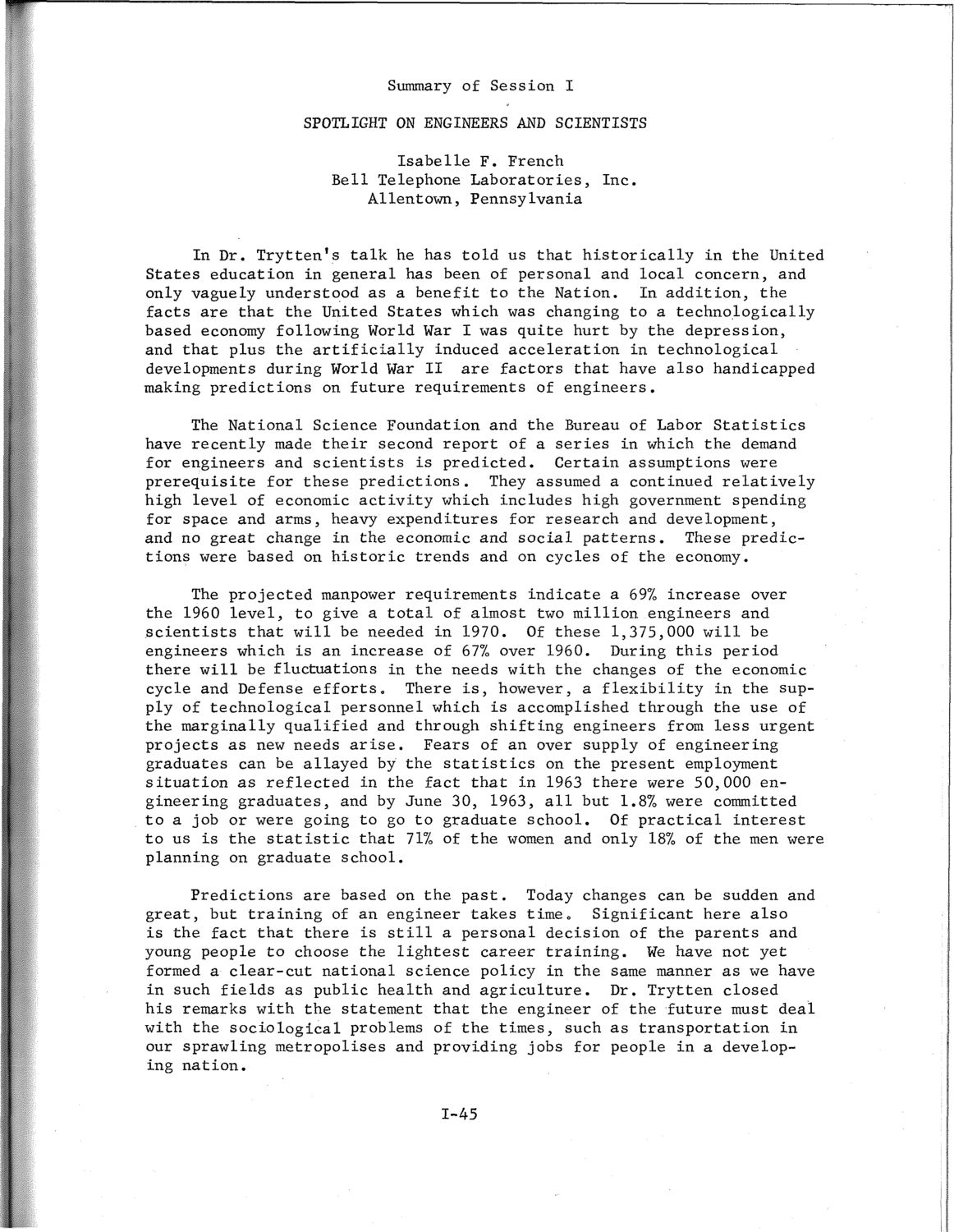| |
| |
Caption: SWE - Proceedings of the First International Conference of Women Engineers and Scientists
This is a reduced-resolution page image for fast online browsing.

EXTRACTED TEXT FROM PAGE:
Summary of Session I SPOTLIGHT ON ENGINEERS AND SCIENTISTS Isabelle F. French Bell Telephone Laboratories, Inc. Allentown, Pennsylvania In Dr. Trytten's talk he has told us that historically in the United States education in general has been of personal and local concern, and only vaguely understood as a benefit to the Nation. In addition, the facts are that the United States which was changing to a technologically based economy following World War I was quite hurt by the depression, and that plus the artificially induced acceleration in technological developments during World War II are factors that have also handicapped making predictions on future requirements of engineers. The National Science Foundation and the Bureau of Labor Statistics have recently made their second report of a series in which the demand for engineers and scientists is predicted. Certain assumptions were prerequisite for these predictions. They assumed a continued relatively high level of economic activity which includes high government spending for space and arms, heavy expenditures for research and development, and no great change in the economic and social patterns. These predictions were based on historic trends and on cycles of the economy. The projected manpower requirements indicate a 69% increase over the 1960 level, to give a total of almost two million engineers and scientists that will be needed in 1970. Of these 1,375,000 will be engineers which is an increase of 677. over 1960. During this period there will be fluctuations in the needs with the changes of the economic cycle and Defense efforts. There is, however, a flexibility in the supply of technological personnel which is accomplished through the use of the marginally qualified and through shifting engineers from less urgent projects as new needs arise. Fears of an over supply of engineering graduates can be allayed by the statistics on the present employment situation as reflected in the fact that in 1963 there were 50,000 engineering graduates, and by June 30, 1963, all but 1.87> were committed to a job or were going to go to graduate school. Of practical interest to us is the statistic that 717, of the women and only 187, of the men were planning on graduate school. Predictions are based on the past. Today changes can be sudden and great, but training of an engineer takes time. Significant here also is the fact that there is still a personal decision of the parents and young people to choose the lightest career training. We have not yet formed a clear-cut national science policy in the same manner as we have in such fields as public health and agriculture. Dr. Trytten closed his remarks with the statement that the engineer of the future must deal with the sociological problems of the times, such as transportation in our sprawling metropolises and providing jobs for people in a developing nation. 1-45
| |